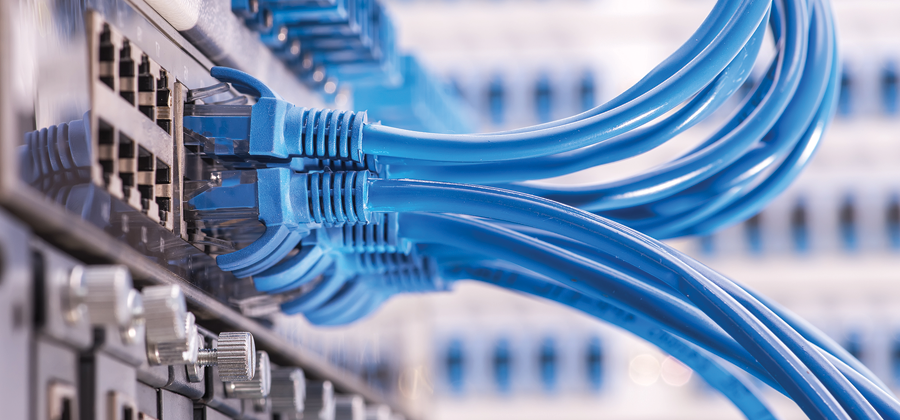Rapidly increasing network complexity is driving demand for the deployment and maintenance of structured cabling plants. In addition, organizations in the industrial sector are shifting toward modern technologies that require integration of operational and IT infrastructure. Structured cabling allows for effective end-to-end network connectivity while streamlining the operational environment.
Traditionally, the industrial sector used point-to-point cabling to establish a direct connection between devices and control systems. The Industrial Internet of Things (IIoT) is changing that dynamic. The IIoT uses automation, machine-to-machine communication, artificial intelligence (AI), big data and advanced analytics to deliver insights that enable smarter decision-making. Better decisions lead to greater efficiency, reduced risk and better business outcomes.
In the IIoT, data is constantly collected, communicated and analyzed to detect potential problems and identify opportunities for improvement. Operations and assets can be managed more intelligently. New revenue models and new ways to serve customers can be identified and developed. Thanks to AI, IIoT devices become smarter as they’re exposed to more data.
The IIoT isn’t a pie-in-the-sky-concept of the future. Organizations in manufacturing, energy, transportation, logistics, aviation and other industrial sectors are using the IIoT today to improve how they operate and innovate.
Top IIoT use cases in manufacturing include production asset management, tracking and maintenance, as well as field service planning and scheduling. Transportation and logistics companies are using IIoT systems to enhance freight monitoring, reduce waste and manage temperature-sensitive products. Smart grids are being used to streamline energy distribution.
Structured cabling provides the critical foundation for IIoT systems. Based upon Electronic Industry Alliance/Telecommunications Industry Association (EIA/TIA) and American National Standards Institute (ANSI) standards, structured cabling systems have six components:
- Backbone cabling is the primary information channel and connects telecommunications and equipment rooms, entrance facilities and outside buildings.
- Horizontal cabling connects telecommunications rooms and work area outlets and enables voice, data, video security and other communications.
- The telecommunications room typically hosts termination equipment that connects horizontal and backbone cabling.
- The equipment room houses telecommunications systems such as servers, routers, switches and mechanical terminations.
- The work area includes equipment that connects the telecommunications outlet with user devices and other endpoints.
- The entrance facility is where the service provider’s outdoor plant cable meets the building’s backbone cabling. It includes customer-premises equipment and security devices.
A standards-based cabling model simplifies integration and helps improve performance, productivity, reliability and scalability. It also helps reduce costs and risk in increasingly complex IT environments and provides the flexibility to support emerging technologies.
Because the lifecycle of a cabling system is typically much longer than the rest of the IT infrastructure, it is important to understand structured cabling methods and plan carefully. As the IIoT continues to expand, organizations will need a network with the speed and capacity to move enormous volumes of data in real time.





